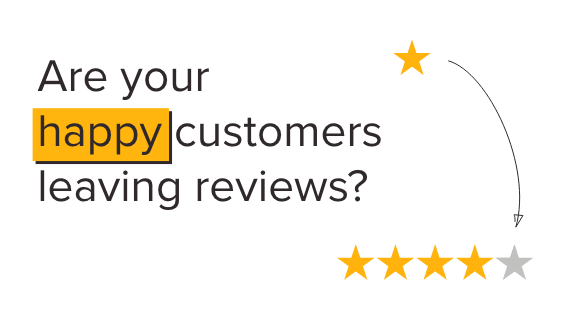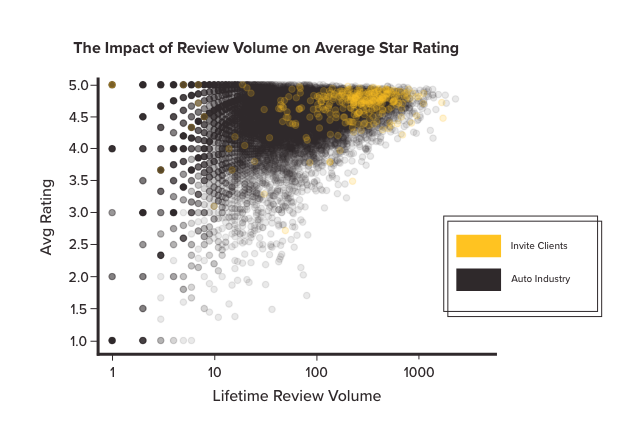-
Products
TechnologyManaged Services
- Resources
- Pricing
- Company
Learn about the metrics that contribute to your company's online reputation performance and use these strategies to manage or repair how you score.

Let’s kick things off with an exercise. Open up Google and perform a search for your business. Ideally, you’ll see a Google Business Profile panel that features your company’s name, contact information, website, and reviews.
.png?width=498&name=GMB%20panel%20example%20(1).png)
Go ahead and click on your Google reviews, and take a look at all the feedback customers have left in the last 3 months. Now, take the average rating from all reviews left in the last 3 months to determine how your business has been doing during that time frame.
The above exercise is just one way you can start to get a better sense of your company’s online reputation performance. A lot of factors play into the strength of your online reputation, from adhering to SEO best practices to establishing a social media presence. But if you haven't made review generation and review response a central part of your reputation management efforts, you'll likely have a hard time climbing the Google search results ladder.
Here are the golden reputation metrics that are at the foundation of any sound reputation strategy.
Core KPIs
There are a handful of KPIs and metrics that paint a pretty clear picture of how you’re doing. In addition to your average rating on Google, some other important KPIs include:
Let’s dive into these reputation metrics in more depth. After reading, you should be armed with the knowledge you need to monitor these metrics and repair your reputation.
Many businesses will simply look at the number of reviews they’ve accrued since the beginning of time and think they’re in a good (or bad) place. However, lifetime volume isn’t nearly as important as monthly volume. According to BrightLocal’s 2020 Local Consumer Review Survey, 86% of consumers say they won’t look at reviews older than three months, while 73% say they only look at customer reviews from the last month when considering a local business. Your prospects want to know if they will have a good experience today. A review from last year won't answer that question.
We recommend you assess your review generation performance in bi-weekly or monthly increments.
To find your target monthly review volume, Widewail has developed this model to help you repair your online reputation:
.png?width=1330&name=review%20volume%20calculation%20(1).png)
Get this: Across the globe, consumers are opening 98% of the text messages they receive on a daily basis, but only open 20% of emails. That’s a crazy disparity! And, more importantly, something you should consider when generating reviews.
Sending review requests via SMS will give your business a much greater chance at generating new reviews as opposed to sending requests via email. Consumers are much more likely to spend a minute or two providing feedback on their phone versus getting in front of their computer to do the same thing. It's as simple as asking where they are paying attention.
At Widewail, we've found that our Invite clients (SMS review request software) on average see a rating increase of 0.3 stars in the first few months. We attribute this to "activating the voice of the happy customer." Without input from the brand, unhappy customers will naturally be more motivated to leave feedback and reputation scores will be negatively skewed.
Our Perspective
Your current Google rating is not a true reflection of your in-store experience. We've found that by proactively asking all customers for a review, asking where they are paying attention (SMS), and by making the process easy, more happy customers will pitch in. Volume goes up. Ratings go up. Online reputation = reality.

Your business might view the perfect 5.0 rating as your north star. But research suggests that consumers are keen on shopping with businesses that have between a 4.2 - 4.5 rating.
Put yourself in the shoes of the consumer. When you see a business that has a flawless 5.0 rating, you might think to yourself, "that's too good to be true, they must be cooking the books." The point being, nobody is perfect and it's ok to have a good but not perfect score.
This isn’t to say that you should actively work to avoid 5-star reviews. Providing the best possible services and solutions to every customer should always be a top priority when working to repair your reputation on the internet. But naturally, as your consumer base grows and the number of reviews you receive increases, you’ll get a handful of neutral or negative reviews along the way. Handling the responses politely and professionally will provide a good example of your customer service in adverse situations - which segues to our next topic.
Often an afterthought, responding to your reviews is just as important as getting them. Businesses will sometimes shy away from responding to reviews, whether it’s due to the manual work required to respond to all feedback or because they’re not sure how to address negative reviews. But showing your customers you’re committed to addressing their concerns (or praises) helps bolster your online reputation, improve search rank, and establish trust with your target audience.
It is a major undertaking for any business to get your internal team up to speed on how to properly respond to negative and positive reviews. The training and possible onboarding of new employees to help with these responsibilities takes time, money, and resources. That’s when outsourcing the review response work can be extremely handy.
Partnering with companies that offer online reputation repair services like Widewail, for example, gives you access to a team of super-talented writers who will respond quickly to customer engagement across your most powerful review sites. This empowers your business to stay on top of your online review management so you can direct valuable in-house marketing efforts appropriately.
When trying to improve or fix your online reputation, monitor your negative review percentage regularly. Negative review percentage is the percentage of negative reviews (1, 2 or 3 stars) your business has and shows customer satisfaction at a high level. Aim for 10%.
Negative reviews can be useful, but only if you act on them and make improvements based on customer feedback. By diving into what your customers are saying about your brand on Google, Yelp, and other review sites, you can gather plenty of data from which to improve. Analyzing customer comments allows you to take note of active problems within your company and start creating solutions.
Sometimes, it can be difficult to see the bigger picture. Negative reviews can appear to be an enemy of success. However, if you view negative reviews as an opportunity to work collaboratively with your customers, you’ll move closer to your ultimate goal of providing a consistent 5-star customer experience.
By monitoring and analyzing trends in negative feedback, you can begin to understand the underlying issues that may be contributing to a negative reputation, address them head-on, and demonstrate to your customers that you're committed to providing excellent service. Remember, a proactive approach to managing your online reputation can help control the narrative and improve customer experiences.
If you're curious about your online reputation score and want to understand where your business stands from a reputation management perspective, check out our interactive Business Reputation Grader. After providing information about your Google Business Profile (est. 2 mins), we’ll provide you with guidance and insight into how you can improve your reputation management strategies.
* Updated on 12/20/23. Originally published on 8/2/21.
I’m the Director of Marketing here at Widewail, as well as a husband and new dad outside the office. I'm in Vermont by way of Boston, where I grew the CarGurus YouTube channel from 0 to 100k subscribers. I love the outdoors and hate to be hot, so I’m doing just fine in the arctic Vermont we call home. Fun fact: I met my wife on the shuttle bus at Baltimore airport. Thanks for reading Widewail’s content!
Bite-sized, to-the-point, trend-driven local marketing stories and tactics.
Automated Review Generation
Video Testimonial Generation

Maintain Accurate Listings

Private Surveys
Review Response Managed Services
Social Media Engagement Services
©Widewail 2025.
U3GM Blog Post Comments